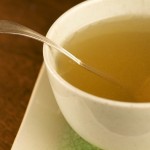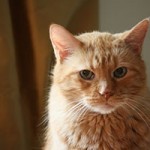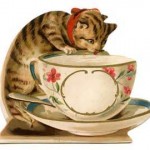How To Prevent Your Cat From Being Finicky

I want to talk about the nutritional needs of cats and why that may be the cause of their finickiness (is there such a word? Yes, it’s a word).
It’s not that cats are hard to please, they’re just misunderstood.
This misunderstanding not only comes from the pet owner, but also from the pet food manufacturers. On a cat forum I moderate I often hear pet owners complain how their cat won’t eat this and won’t eat that. Since I’m a big advocate of feeding cats a species appropriate diet of raw meat, the next complaint is “My cat will never eat raw. He is too addicted to kibbles/canned food to change”.
The pet food industry placates to the cat owners frustration with their “difficult” feline. They use advertisements to reinforce the myth of the finicky cat. We’ve all seen the TV commercials: A beautiful white Persian wearing a diamond collar sits on a satin pillow while turning her nose up to every offer of canned wet food, except for (insert brand) which is served in a sparkling Waterford crystal bowl. Then the narrator says: “For the princess in your life” or “to satisfy even the most discriminating connoisseurs.”
Traditionally, commercial pet food is developed based on the cat’s sensory characteristics. First, there is the sense of smell. Cats have 200 million odor-sensitive cells. Humans only have 5 million. Believe it or not, cats have a more sensitive sense of smell than dogs. That’s because cats can discriminate between a greater variety of odors. This is due to one of the three scent receptor proteins in the nose called V1R, or vomeronasal type-1 receptor. This protein allows the animal the ability to separate one smell from another. Humans have only two; dogs have nine V1R receptors, and cats have 30 (but rats have 120 V1Rs). It’s no wonder the cat can pick out those pills or supplements you hide in their meal (See study HERE).
After the cat smells the food, the next step is to taste it. Since cats are attracted to amino acids the taste buds on their tongue will let them know if it is rich in protein. The cat’s tongue feels the texture of the food to see how easily they can get it in their mouths. The last and most important factor is the cat’s previous experience with food. For example: if the mother cat ate “X” then the kittens will eat “X.” In the pre-natal stage, kittens sense of taste becomes functional in the final days of gestation. Once born, the food the lactating mother is eating comes through in the milk. So, whatever the mother cat is eating, the kittens will develop a taste for. After they are weaned, the kittens continue to be influenced by the mother’s proximity and the food she is eating. At this point, it would be a good idea to rotate a variety of different foods so the kittens don’t grow up to develop a fixation on one diet.
How Pet Food Companies Manipulate Your Cat
The pet food companies do everything in their power to manipulate different taste and smells in order to get cats to not only accept their food, but become addicted. But, finding a magic formula that all cats will accept is not easy. So, in order to get a cat to eat their de-natured, ultra-processed food, the pet food companies will mix pyrophosphates (aka “Kitty Crack”) with the meat to enhance the taste of amino acids. These chemicals are so effective that it can drive the cat to binge eat to the point of vomiting.
The big thing in pet food manufacturing is Palatant Manipulations. In other words, flavorings and attractants (listed on the label as Natural Flavorings) which are used to make up for short comings in taste. Palatants are a billion dollar industry where the four major pet food companies compete to create the “secret ingredient” that will get cats to stick to one food (In the wild, it is not natural for cats to stick to one food). Pet Food Companies will also use Nutrient Imbalances to trick the cat into thinking it’s not getting enough of a certain nutrient so it will continue to eat beyond satiety. All of these artifical taste manipulations sets the cat up for fixation.
The one thing pet food companies find difficult to include in their recipes is the natural evolution of feline feeding behavior in the wild. This is important because the cat’s palate is tightly linked to a carnivore’s physiology of the hunt, the catch, the kill, ingestion, digestion, approval or disapproval of the nutritional value, safety, and satiety of the food.
Influencing Factors On Feline Food Selection:
There are many factors that influences the cat’s food selection and consumption: Such as, evolutionary factors, natural feeding behavior, and learned feeding behavior. Next, is health problems, environment, and pet food manufacturers’ product manipulation and modifications.
Let’s first look at the evolutionary factors: The cat is a solitary hunter with a diverse selection of small prey to feast on from rodents, birds, insects, and lizards. A cat in the wild may have 10 to 12 small meals a day: For example, the cat will eat a mouse in the morning, later in the day, a bird, maybe a bug or a lizard for lunch, in the evening, another mouse, and so on. Each individual meal is only a small percentage of the calories a typical cat needs for energy and weight maintenance. A 10-lb cat needs approximately 300 to 350 calories to maintain his weight and replenish his energy. An average-sized mouse is about 30 calories, so he’s going to need to catch, at least, ten mice a day.
Cats do not associate hunting with eating. Yes, cats will hunt to eat, but they’ll also hunt for fun. You can feed your cat until he is full, but it’ll never eliminate his natural instinct to hunt. I wrote a blog called “A Simple Pleasure” which describes the cats hunting behavior and several observational studies. You can read it HERE.
The way humans feed their cats has no similarity to a cat’s natural feeding behavior. Most pet owners only feed their cats twice a day. They open a 3-oz can and plop the whole thing in a dish and then get upset if the cat eats only a bite or two. Instead, you may want to try and copy the cat’s natural feeding behavior by breaking up the food into several small feedings throughout the day.
In feeding my own cats I’ve had to learn that lesson too. Even with their species appropriate diet of raw meat, and a big breakfast, my cats will still nag me for food. I now break up their meals from two big ones to three or four smaller meals, while still maintaining a daily 300-calorie consumption. This way I’ve stopped the nagging and appeased their natural instinct and no food gets left on the plate (And NO! Please don’t leave bowls of kibbles out for the cat to graze on all day. Dry food is extremely unhealthy and will lead to obesity and health problems).
Cat Strategies In Food Selection:
There are several ways a cat will select their food.
Monotony/Neophilia – This is a cat that is very open to trying different types of foods. You see this mostly in feral or barn cats that instinctively realize diversity in their diet equals nutritional balance. What’s interesting about these cats are they select their food like an environmental strategist: they’ll eat whatever scraps humans throw to them just so they can protect their available prey from overkill and keep nature in balance.
Fixation/Neophilia – This is something you see mostly in domesticated housecats. The more “same ole, same ole” the diet, the less interest the cat has in trying something new. To break the fixation, the cat needs repeated exposure to a new food. This can be challenging to pet owners who often give up after the first try if their cat immediately doesn’t like a new food. I hear it all the time when asking owners to switch to raw “I tried it. The cat wouldn’t eat it.” Transition should be slow and repeated at least 3 times to trigger interest.
Aversion – This can happen if the cat associates a specific food with stress or a bad experience. If a particular food is followed by a stomachache or vomiting, the cat will avoid it in the future. Medications in the food can turn a cat off. The stress of strangers feeding them in a clinic, or a pet sitter, can turn them off accepted food. Odors may also trigger an aversion. In one study, researchers pumped into the air different smells while subject cats were eating. The odors cats found offensive turned the cats off their food. We have to realize a cat’s sense of smell is more acute than humans. So, if we are using air fresheners, detergents, or perfumes, in the same room a cat is eating it may cause an aversion. And, keep in mind, all it takes is ONE bad meal experience to cause a cat to refuse their accepted food.
Warm the food – A recent study conducted by by pet food manufacturers Royal Canin and Waltham Petcare/Mars Petcare (which owns Royal Canin) found that cats preferred warmed foods to those at room temperature, or cold food right out of the refrigerator. Warmed food (37 degrees C/98.6 degrees F) imitates the temperature of a freshly killed prey. The researchers theorize that the study cats preferred warm food due to the release of volatile compounds that enhance the smell and taste of the food. One compound, hexanoic acid, which is related to palatability, increased as the food was heated above room temperature. In addition, the warmed foods released more compounds associated with meat flavors, but fewer terpenes related to plant flavors.
The way I warm up my cats’ food is to sit their stainless-steel food bowl in a larger, shallow dish of hot water (like, a pie dish). Do not micro-wave your cats’ food. Not only can micro-waving make the food too hot but will destroy important nutrients.
Processed Cat Food Contain Species INappropriate Ingredients:
Cats taste system is the next influence for food selection. It is specialized for particular amino acids: such as, L-methionine, L-cysteine, L-taurine, and L-arginine. All of these nutrients are present in the prey a cat catches and eat, and it is also present in a homemade raw meat diet. Ultra-processed food which is cooked at high temperatures for a long time contains de-natured meat where these nutrients or essential amino acids are reduced or eliminated. For this reason, pet food manufacturers have to add synthetic lab-made vitamins and minerals (But, I must add, freezing and thawing of raw meat will reduce taurine which is why I recommend adding taurine supplements to a raw diet. See my blog “Taurine & Your Cats Health”).
Cats have no sweet taste bud. On top of that, cats also don’t have amylase in their saliva which is an enzyme that breaks down carbohydrates and starch into simple sugars that supply energy to cells (Humans do have amylase in their saliva. That’s why when we eat rice or potatoes we can taste some sweetness). If cats can’t taste or utilize the glucose from starches and carbs then why is it in commercial cat foods? And why do pet owners think their cats enjoy eating carbohydrates? That’s just a rhetorical question, because cats can’t taste the carbohydrates at all. Instead, what the cats are tasting are the underlying flavors of the amino acids they seek. Basically, pet food manufacturers add carbs/starch as fillers to make up for the lack of meat.
Take a look at the can of cat food you’re feeding your cat and see if it lists DL-methiomine. If you see it, it means the food likely doesn’t contain protein primarily from meat or that the food is very high in carbohydrates. An all-meat diet will be naturally high in L-methiomine (without the D). Carbohydrates can make your cats gastro-intestinal system too alkaline which can lead to UTI and the formation of crystals. Plus, carbs can raise insulin resistance which triggers inflammatory diseases, like, dermatitis, arthritis, pancreatitis, diabetes, etc.
Cats are smarter than us for what they should be eating. What they should be eating is a high level of protein and essential amino acids, fat and essential fatty acids. Individual levels may vary depending on age and illness of the cat.
Meat can be expensive for the pet food manufacturers. Instead, they’ll use plant proteins as a substitute, or as a supplemental addition, in order to keep expenses down and meet USFDA “protein profile” requirement for pet food. The problem is plant protein is a different kind of amino acid to the essential amino acids in meat. Plant proteins for cats are more difficult to digest with a limited absorption of nutrients that can be utilized by the body.
The most common plant protein you’ll see in pet food is legumes. Legumes, like, peas, chick peas, lentils contain the anti-nutrients, lectin and physates. Physates and lectins can cause nausea, damage the gut wall, and interfere with absorption of nutrients. Other plants you’ll see in pet food are guar gum, carrageenan, both used as a thickerner for gravy which can also cause nausea and digestive issues, like, IBD and pancreatitis. Then there are tomatoes, potatoes, and yams that contain “enzyme inhibitors” and if eaten with meat will interfer with the digestion of protein and fat.
What Do Cats Really Want?
Have you ever had a cat that had been eating a particular brand of cat food for weeks, or months, and then suddenly doesn’t want to eat it anymore? Pet Food Manufacturers actually have a name for it, it’s called “Post-Ingestion Long Term Acceptance.” Researchers at the Pet Food Labs scratched their heads and were at a lost as to what was happening. What have they over looked? There is very little information on what specific nutrients cats are looking for in their food. But what they did know was that cats didn’t select foods based on the flavors of sweetness, saltiness, or protein only. So, what is it? What do cats want?”
So, the researchers looked for answers in another carnivore animal: the mink. And like the mink, they realized cats would also modify their food choices to regulate their intake of protein, fat, and carbohydrates in order to reach a target goal that matches the macronutrients of their natural prey. In conclusion, it is this balancing of macronutrients that is the primary driving force for long-term food selection.
So, what are the cats macronutrient preferences? It’s 52% protein, 36% fat, and carborhydrates tops off at 12%. These marconutrient profiles are true for all felines, such as, feral cats, domesticated cats, and wild cats. When fed a high carb, low protein diet (such as, a Prescription Kidney Diet) the cat will limit the carbohydrates to 72 calories per day. However, cats will be a little more flexible with protein and fat, thus, overshooting the target intakes in order to fuel their protein and energy requirements.
But, if a food does not meet the cat’s macronutrient preferences then no amount of palatants or flavoring agents the Pet Food Manufactuer adds to their product will get the cat to eat it long-term.
12% seems like a lot of carbs a cat would normally eat. My question is: How would a cat eat carbs in the wild? The answer is, they wouldn’t. Some people may suggest the cat might get some carbs from the stomach content of their prey. Maybe, but it would be a very small amount. For example: An average prey mouse is 70% Moisture; 63% Protein; 21% Fat: .04% Fiber, and .06% Carbohydrates. That’s less than 1% carbs and fiber.
Compare the mouse to Dry Food: 12% Moisture; 30% Protein; 11% Fat; 4% Fiber, and 43% Carbohydrates. Whoa! That’s a lot of carbs. Protein and fat is cut in half. Cats have a low thirst drive, mainly because they get most of their hydration from food and dry food is very low in moisture. The fiber is very high and anything above 1% fiber in a cat’s daily diet can lead to gastro-intestional disorders.
Tips For The Finicky Cat:
Encourage variety of different foods to overcome fixation and help improve digestive intolerance. Try fresh foods, freeze-dried treats, different textures, smells.
Read the ingredients; know what is in the product. If you’re feeding processed food and decide to switch brands, know who is the Manufacturer. It’s important to understand that when a major Pet Food Company buys out a smaller company the major brand will switch the palatant of the smaller guy to their own palatant. So, you’ll be thinking you’re giving your cat a new food when in reality you’re giving the same food because of the same palatant. Note: When feeding ultra-processed cat food, changing the protein to duck, to rabbit, to turkey doesn’t make any difference. That’s because the palatant makes all the meat taste the same.
Offer a new food in a friendly environment where the cat feels safe. Try hand feeding to create a “mother cat-kitten” bond. Feed smaller portions. Remember the cats natural feeding behavior: cats eat small servings throughout the day. So, instead of plopping a whole 3-oz can down in your cats dish, try just half. Wait a little bit, and give the other half.
Avoid offensive odors. What smells are in the kitchen? In a multi-cat household make sure each cat has their own bowl. Use wide, shallow bowls to avoid whisker fatigue. Cats whiskers are very sensitive and brushing against the side of the bowl can actually be painful. Feed the food at room temperature. If your cat is stressed, petting will release endorphins and may help your cat to relax.
Last Word:
I’m a little bias towards raw feeding, but I know some of you are feeding your cat an ultra-processed pet food.
My cats have never been finicky because I feed them a species appropriate diet of raw meaty bones and organs. There’s no shortage of protein and essential amino acids or fat and essential fatty acids, macro-and-micronutrients, in a natural diet. If you’re interested in more information on dealing with a finicky cat, or would like to switch to a raw diet… consider a consultation










